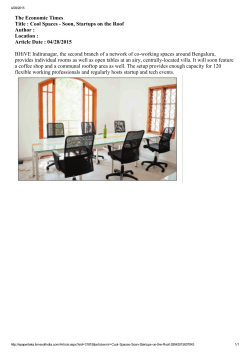
The Cube-Shah Residence - Dipen Gada & Associates
The Cube-Shah Residence DESIGN COMPANY: Dipen Gada & Associates DESIGERS: Dipen Gada, Hardikk Tamboli, Aditi Dave, Shalini Pereira, Tanvi Rajpurohit, Dolly Shah LOCATION: Baroda, India AREA: 391.6 m² MATERIALS: RCC, wood, metal, etc. PHOTOGRAPHER: Tejas Shah The case is situated in Baroda and the inspiration for this house is the simple cube. The modern aesthetics of the house employs a combination of exposed RCC and white plastered exterior walls in such a way that they look like cubes fitting into one another, creating masses and voids and resulting in a structure that is simultaneously massive and intimate. The exposed RCC walls seen on the outside continue on the inside to create focal elements in a few of the interior spaces. This 4000 sqft home embraces modernism with clean lines and an open floor plan, while keeping in mind the region's climatic conditions and Indian ideals. Environmental transparency at the ground level, is created through courtyards and large openings help passively cool the internal spaces. A raised entry threshold signifies the entry into the house. The flooring here is made of tiles of multi-coloured river polished kota stone leading to the entry. At the entry the designers first see a custom made grill that has been cast out of aluminum. The entry vestibule opens out into the living room area. There is a small courtyard adjacent to this vestibule. This is visible from the living and dining area, but it has been screened from the vestibule area by a custom made screen of lacquered M.S sheet. This courtyard acts as a light well drawing diffused light into the house. Overall we have used a neutral colour palette throughout the house. Materials have been applied with great restraint and care to detail, so that the house appears somewhat austere. However strategically placed art pieces tastefully elevate the house's level of sophistication. In the interior, the flooring of the lower ground floor level is made of high mirror with polished kota stone that creates a contemporary and elegant look. 034 035 This material compliments the exposed RCC which has been used in the slab in the living and dining areas. Something Dipen feels strongly about is that the success of any project is a team effort, and the role of a site coordinator is very important in the overall scheme of things. In this project we worked closely with the coordinator to ensure that the best was drawn of the labour agencies. Without their skill and hard work, the level of finishing seen in this project could never have been achieved. 036 037 038 039 040 041 042 043 The Wall House DESIGN COMPANY: Dipen Gada & Associates DESIGNERS: Dipen Gada, Rinkesh Panchal, Tanvi Gala, Yatin Kaviya LOCATION: Baruch, India AREA: 510.95 m² MATERIALS: Steel, concrete, etc. PHOTOGRAPHER: Tejas Shah The structure is bisected by a wall that physically demarcates space as well as influences the character of the interior spaces. Due to the narrowness of the plot, the wall house is conceptualized as a linearly planned structure partly bisected by a 34 feet high wall that also forms the main exterior façade of the house and is its main focal element - The Wall. This wall is clad with raw, unfinished kota, a stone indigenous to the Rajasthan region. The play of sunlight on this uneven surface creates interesting patterns of light. This wall runs through most of the interior spaces and influences the character of these spaces. As we enter, a small foyer space is demarcated by 20 round cut-outs in the wall and is treated with blue coloured glass. On one side a staircase runs along the kota wall and leads up to the upper floor. The slab above the staircase has a cut-out and creates an interesting syography on the wall due to the shadows created by the pergolas. The living room is very minimally treated. The concrete slab has been kept exposed and one of the walls has been treated with simple smooth plaster which has been left raw and unfinished. Light washes this wall from a pelmet finished with a cement board that merges with the plaster. The living area has a calming, serene feel especially with the light wafting through the sheer fabric curtains that cover the french door that opens out into the lawns of the garden. The transition from public to private spaces is marked by a change in the flooring. The white mirror polished Italian marble seen in the foyer, living and dining areas gives way to an earthy, mirror polished kota stone. Physically also these spaces are bisected by the kota wall. 152 153 On the other side of the Kota wall, adjacent to the dining space is a home theatre space which doubles as a more informal living space which is used mostly by the family as a space to unwind. In the designing of this house there was no distinct architectural phase and interior phase. This is the reason why the interior work seamlessly merges with the architecture and both have almost a symbiotic relationship with each other. This is the main aim of the design to avoid unnecessary and superficial embellishment. 154 155 156 157 158 159 160 161 162 163
© Copyright 2025












